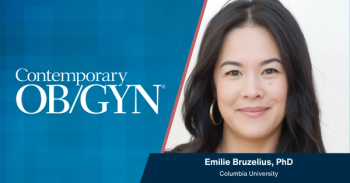Lesbian, gay, and bisexual (LGB) cisgender women with a primary care physician (PCP) are more likely to receive cervical cancer screening (CCS), according to a recent study published in JAMA Network Open.1
Takeaways
- Having a primary care physician (PCP) is associated with higher rates of cervical cancer screening (CCS) among lesbian, gay, and bisexual (LGB) cisgender women, potentially mitigating disparities exacerbated by systemic discrimination.
- Marginalized populations, including LGBTQIA individuals, face barriers to CCS utilization due to systemic discrimination, poor insurance coverage, and limited healthcare access, perpetuating health inequities.
- Despite recommendations for CCS by the US Preventive Services Task Force, underutilization persists, particularly among marginalized groups, highlighting the urgent need for targeted interventions to address barriers to care.
- Disparities in CCS utilization exist among racial and ethnic groups, with lower rates reported among certain populations, emphasizing the intersectionality of factors influencing healthcare access and utilization.
- Establishing care relationships between LGB individuals and PCPs may significantly improve CCS utilization, underscoring the importance of accessible and inclusive health care services in reducing cervical cancer disparities.
Cervical cancer incidence and mortality is significantly reduced by CCS, making it recommended by the US Preventive Services Task Force. However, CCS remains underutilized by marginalized populations because of systemic discrimination, poor CCS insurance coverage, inequitable health care access, and stigma.
Additional barriers toward CCS LGBTQIA individuals face include providers underestimated their risk of contracting human papillomavirus (HPV) and limited research about disparities among this population.
Cervical cancer cases and mortality have also risen in regions with health inequity.2 A recent study reported a 2-fold increase in cervical cancer deaths in Appalachian Kentucky vs national rates, with a relative risk of 2.1. From 2009 to 2019, cervical cancer rates in Appalachian Kentucky increased 2.9%.
To assess CCS among LGB cisgender women vs heterosexual cisgender women in the United States, investigators conducted a retrospective, cross-sectional, population-based study.1 Data was obtained from the Healthy Chicago Survey and was self-reported by participants through web or paper interview.
Variables included age, income level, race, ethnicity, having a PCP, and insurance coverage. LGB status was determined based on self-identifying as lesbian, gay, or bisexual. Participants were reported as having a PCP based on the survey question, “Do you have at least one person you think of as your personal doctor or health care provider?”
The survey question, “How long has it been since your last Pap test?” was used to determine up-to-date CCS. A test in the prior 3 years was considered up-to-date. Exclusion criteria included being aged 21 to 24 years and missing sexual observation, Papanicolaou test outcome, or both.
There were 5167 cisgender women aged 25 to 64 years included in the analysis, over 90% of whom were heterosexual. Having up-to-date CCS was reported among 71.14% of LGB cisgender women vs 76.95% of cisgender women. Having a PCP was reported among 80.09% vs 85.76%, respectively.
An up-to-date CCS was reported by 61% of Asian or Pacific Islander cisgender women, 78% of Black cisgender women, 79% of White cisgender women, and 69% of cisgender women of another race. These rates were 69% for Hispanic women and 77% for their non-Hispanic counterparts.
A stratified analysis indicated an 11% reduced rate of up-to-date CCS among LGB cisgender women vs heterosexual cisgender women. Rates were reduced by 15% among Black LGB women, 5% among White LGB women, and 13% among LGB women of another race.
The rate of up-to-date CCS was reduced by 28% among LGB cisgender women without a PCP vs their heterosexual counterparts. Among those with a PCP, the rate was only reduced by 6%.
No other significant association was reported between another variable and up-to-date CCS in further interaction analysis. However, the association remained between having a PCP and receiving CCS among LGB cisgender women.
These results indicated reduced odds of receiving up-to-date CCS among LGB cisgender women vs their heterosexual counterparts, but this disparity is reduced by having a PCP. Investigators concluded, “establishment of care between LGB individuals and PCPs may improve CCS utilization for this population.”
References
1. Baumann K, Matzke H, Peterson CE, et al. Sexual orientation and cervical cancer screening among cisgender women. JAMA Netw Open. 2024;7(5):e248886. doi:10.1001/jamanetworkopen.2024.8886
2. Krewson C. Cervical cancer cases rising in regions with health inequity. Contemporary OB/GYN. October 23, 2023. Accessed May 14, 2024. https://www.contemporaryobgyn.net/view/cervical-cancer-cases-rising-in-regions-with-health-inequity

















